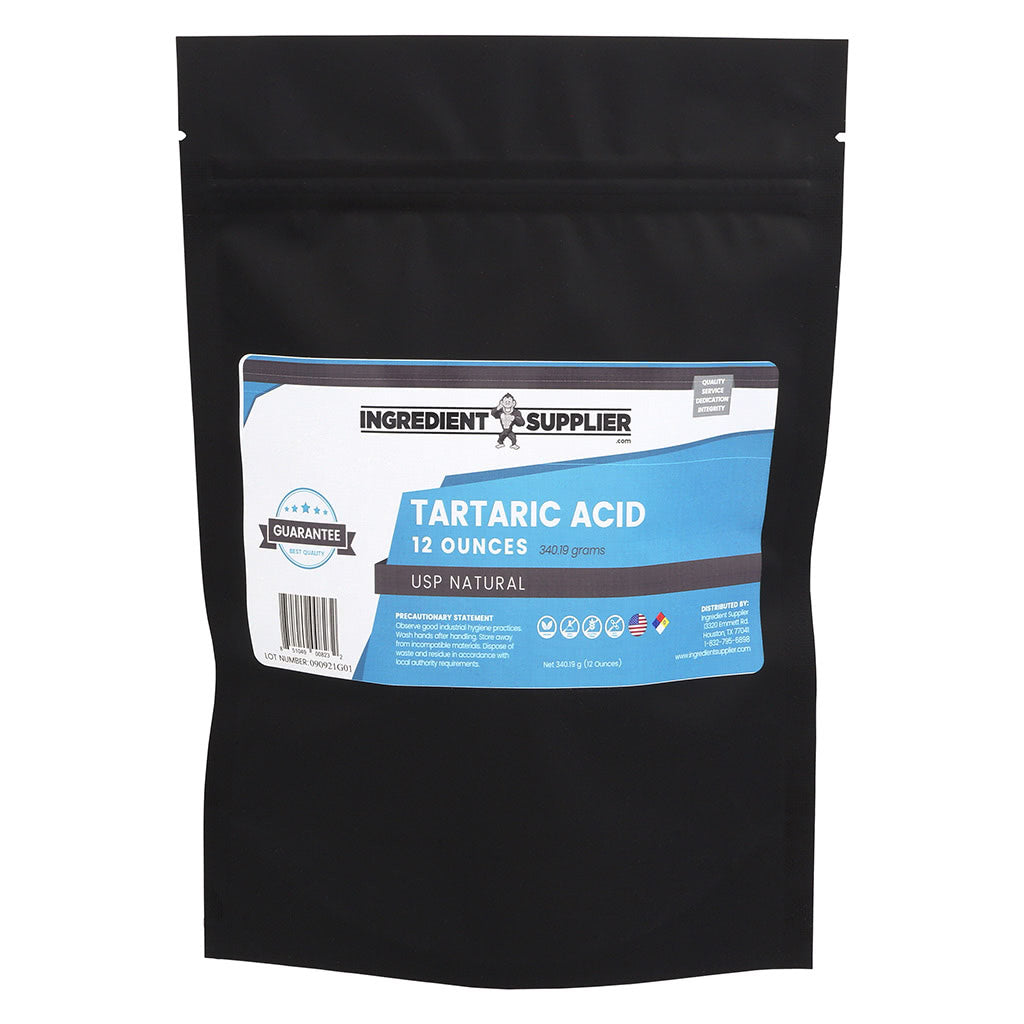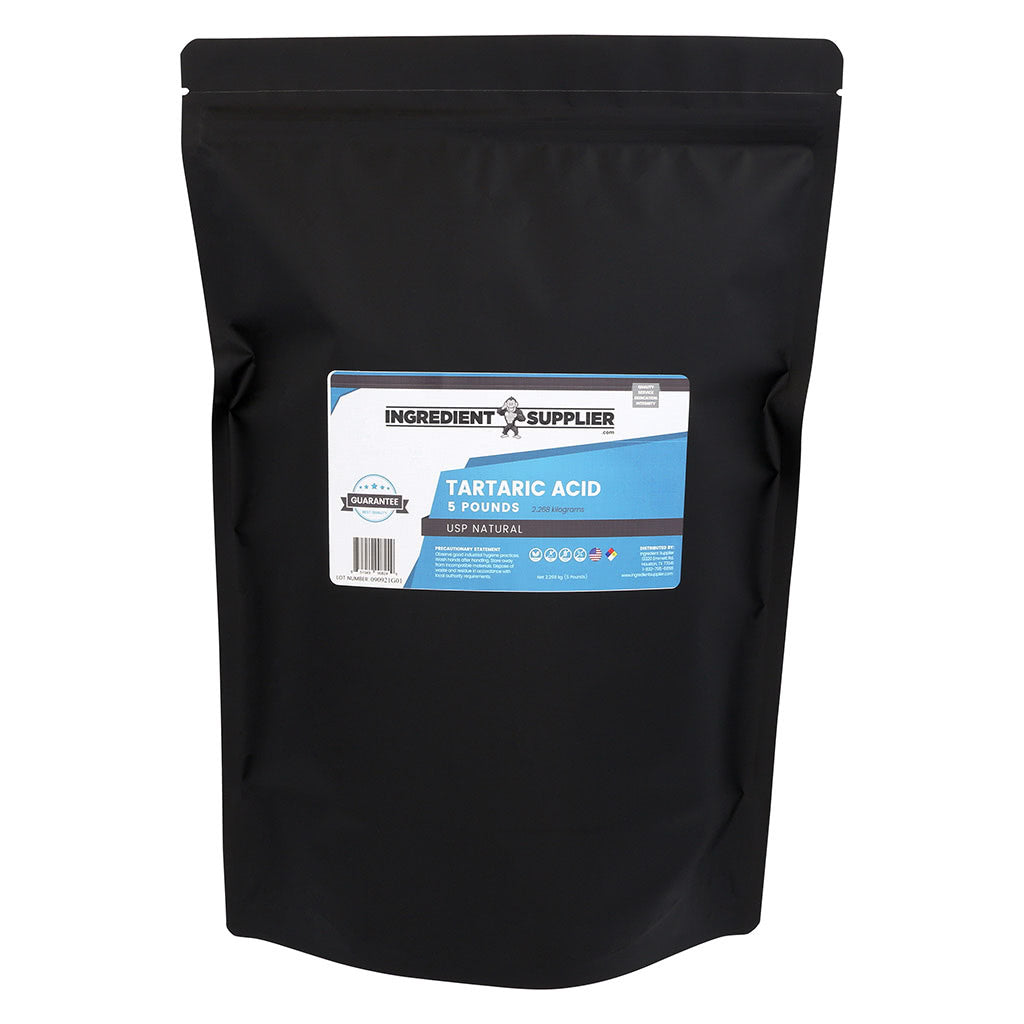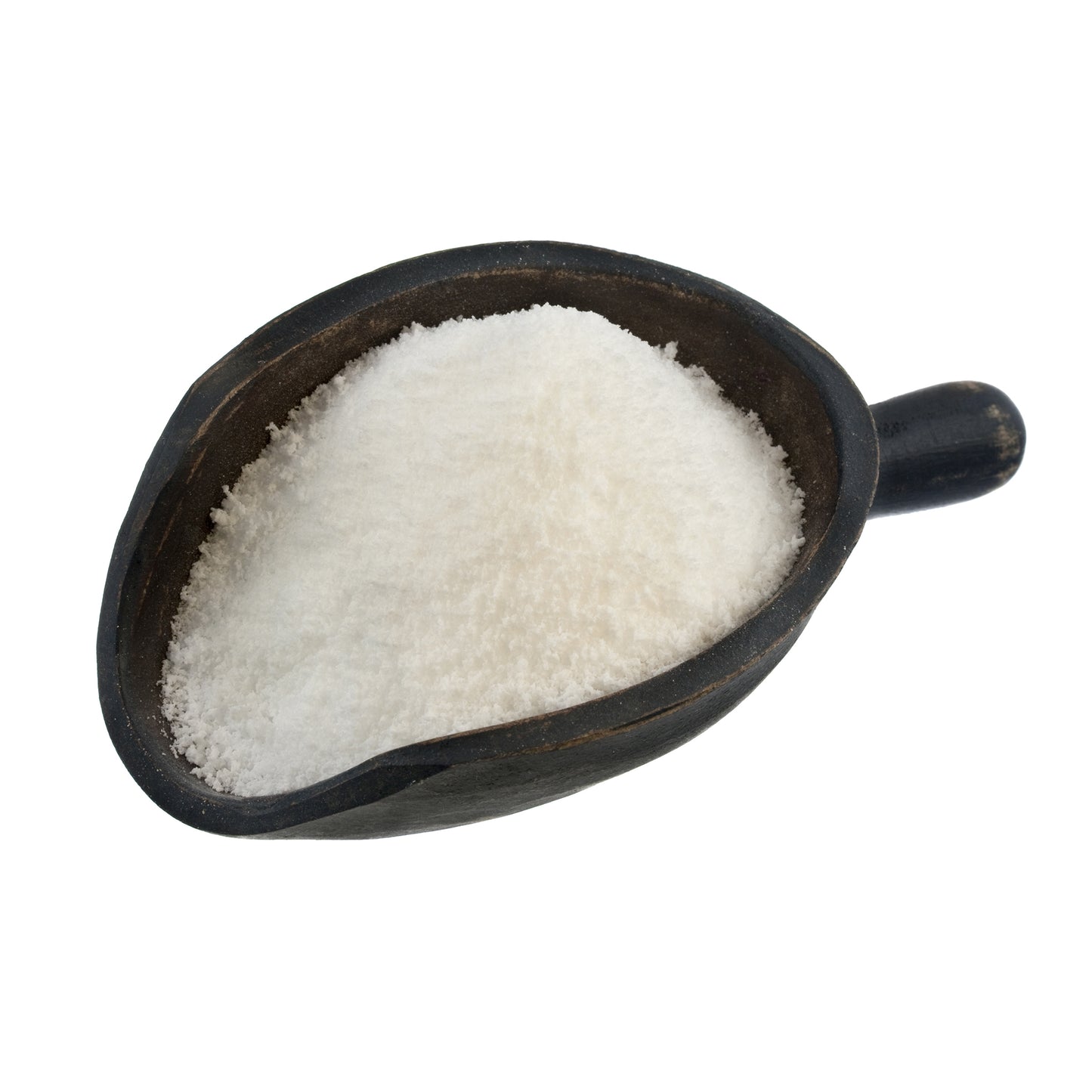Ingredient Supplier
Couldn't load pickup availability




Download SDS
What is Tartaric Acid?
Tartaric Acid, also referred to as dihydroxy succinic acid, is a white, crystalline, organic acid that occurs naturally in many fruits, most notably grapes. The salt that comes from Tartaric Acid, potassium bitartrate, is commonly known as cream of tartar, and is frequently used in baking recipes. Tartaric Acid is one of the acids found in wine and is water soluble.
How is Tartaric Acid Made?
Tartaric Acid is naturally occuring, similar to Citric Acid, and can also be created through synthetic methods. Tartaric Acid is credited as having been discovered in the late 1700s.
Benefits & Uses of Tartaric Acid
Tartaric Acid is a common food additive, and while that is its main application it does have other uses:
-
Food
Most notably, Tartaric Acid is found naturally occurring in wine, grapes, avocados, and other similar fruits. However, its application and uses in foods go way beyond simply the natural occurrences. Tartaric Acid is frequently used as an acidulant, which means it helps to maintain the levels of pH within foods. This is particularly useful with foods such as breads, which needs to maintain its pH levels to keep from spoiling.
Additionally, Tartaric Acid is also an antioxidant, flavor enhancer, stabilizer and sequestering agent. One of the main uses of Tartaric Acid as a food additive is as a preservative in marmalades, jellies, james, gelatins, and ice cream. Notably, Tartaric Acid is also used in juices and other beverages, such as soft drinks that are grape and lime flavored.
Tartaric Acid is used in baking powder, to provide a reaction with the sodium bicarbonate, which helps create rise in baked goods. One of the most common uses of Tartaric Acid is combining it with egg whites to aid in the baking of meringue.
Due to its many preservative properties, Tartaric Acid can be used as an ingredient in making cheese, as well as a preventer of the crystallization of sugar in sugary syrups and icings.
Tartaric Acid has been commonly used in Mexican, Spanish, and Portuguese cuisines for many years. -
Cosmetic
Tartaric Acid can be used in a variety of cosmetic applications. Because Tartaric Acid is an alpha hydroxy acid, it has properties that render it a gentle exfoliant. Due to its gentle nature, it is a great ingredient for all skin types.
Additionally, Tartaric Acid can function as an exfoliator, and assist in dissolving flakey and hard layers of skin, allowing the skin to be more receptive to absorbing other ingredients, particularly ones that moisturize.
Since Tartaric Acid comes from grapes, it possesses antioxidant qualities, which protect the skin from harmful UV rays and free radicals.
Tartaric Acid has the unique ability to regulate the pH of other acids, which helps to reduce any irritation that might occur from a cosmetic product containing various acidic ingredients. -
Medical
Tartaric Acid is used in medical analysis, to determine levels of glucose. Tartaric Acid can serve as a vehicle to carry medications, including as an emetic, or as a drug to induce vomiting. -
Hobby
Tartaric Acid is used in the process of making mirrors, also called “silvering.” Additionally, Tartaric Acid is an ingredient in the process of tanning leather and can be used as an ingredient in fabric dyes. Tartaric Acid is used within the solution to develop pictures. -
Industrial
Works to slow the drying out of ingredients such as cement and plaster. Tartaric Acid is used in the blue ink that goes to make blueprints. Used in fertilizer to aid in complexing micronutrients. -
Household
Tartaric Acid can be included in a recipe to craft a kitchen scrub powder as well as being an excellent source of cleaner for copper. Combining Tartaric Acid and vinegar can result in a great cleaner for removing scaly buildup in tea kettles.
Dosage, Safety & Side Effects
The Food and Drug Administration (FDA) has affirmed Tartaric Acid as Generally Recognized as Safe for consumption as a direct food substance. The FDA has also approved the use of Tartaric Acid and Potassium Sodium Tartrate in over the counter antacid drug products. Many tout its use as an antioxidant, a digestion aid (including flatulence reducer) and glucose regulator, as well as immunity booster. However, that is contingent upon keeping the dosage appropriate to one’s body. This recommendation varies, depending on the source, but the common guidance seems to be no more than 2 grams per pound of a person’s body weight per day.
While it is unlikely to cause issues when consumed in food products, side effects of overconsumption include increased thirst, vomiting, diarrhea, abdominal pain, and gastrointestinal inflammation. One can consume a lethal overdose of Tartaric Acid, as well as irreversible organ damage if consumed at too high of levels. Tartaric Acid does not naturally occur in the body, and should be treated as such when consumed. Direct consumption of tartaric acid by itself should be avoided.
Tartaric Acid is toxic to dogs and many other household pets.




